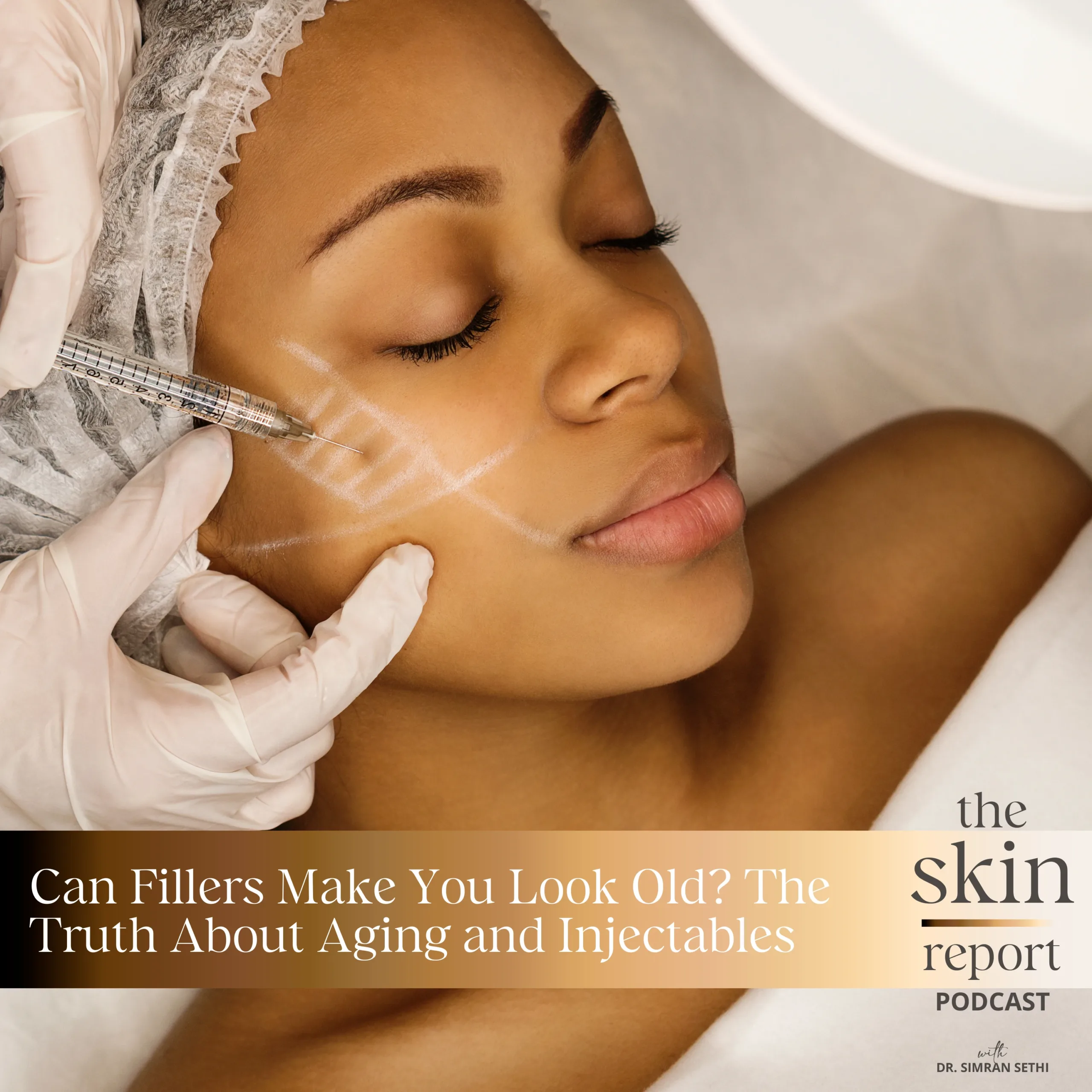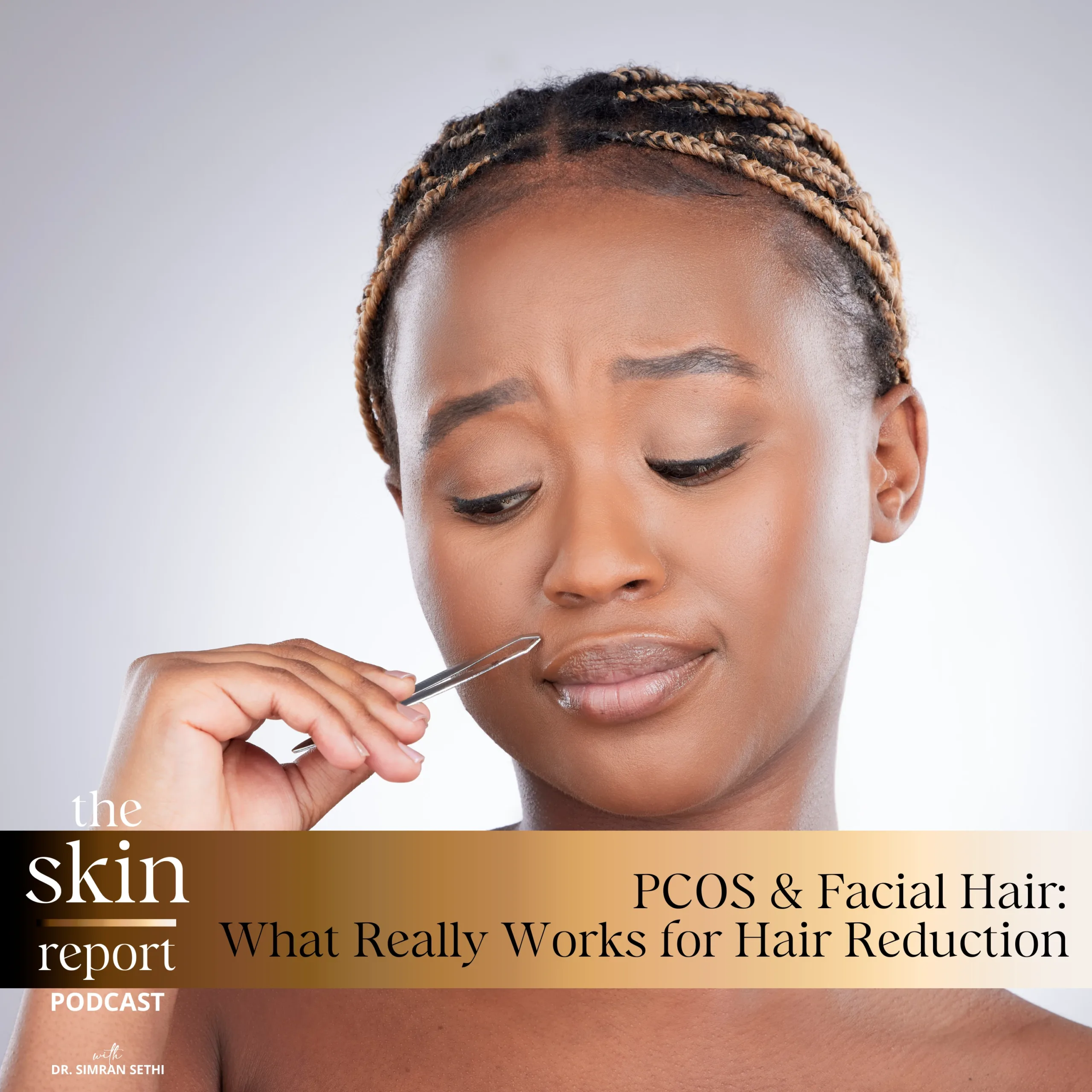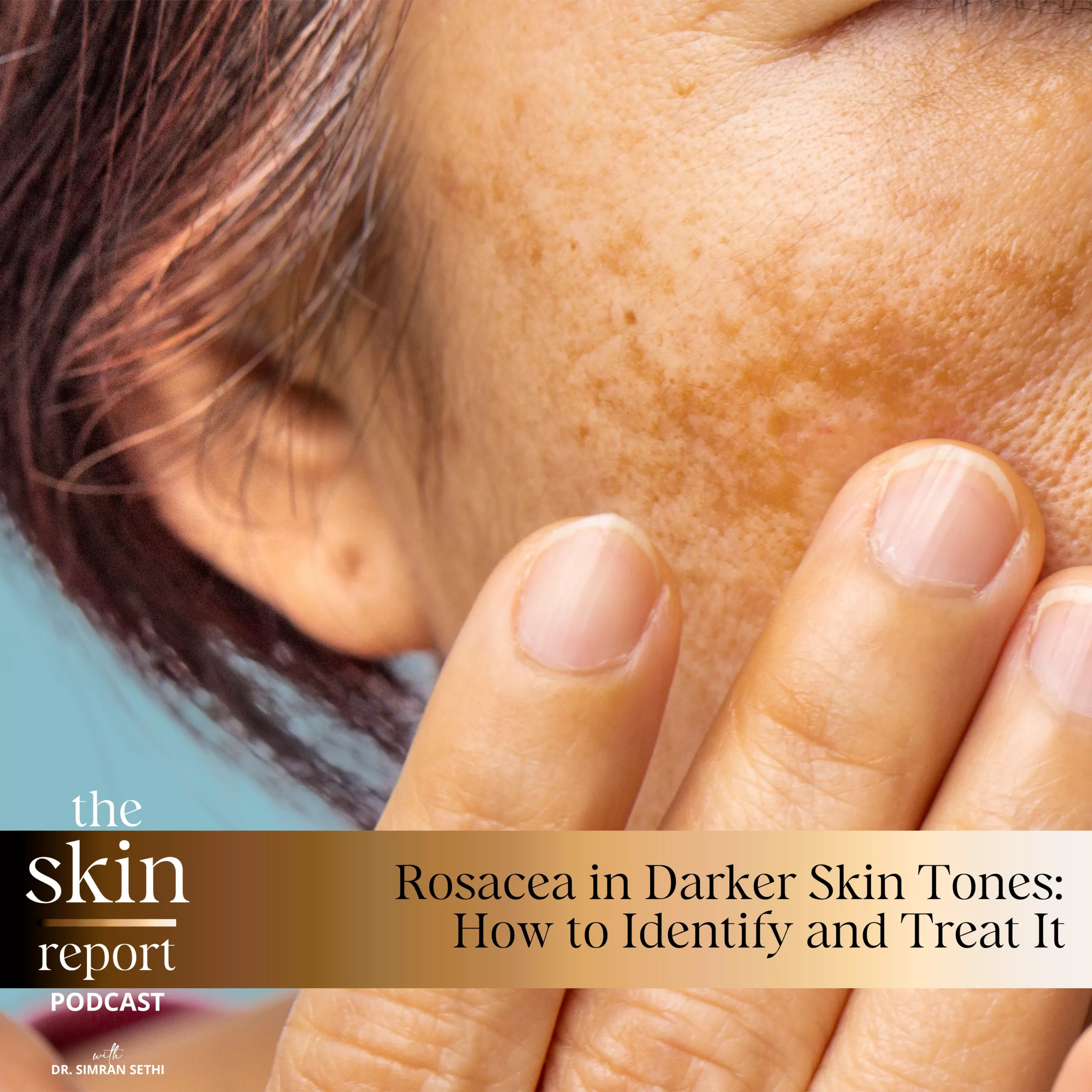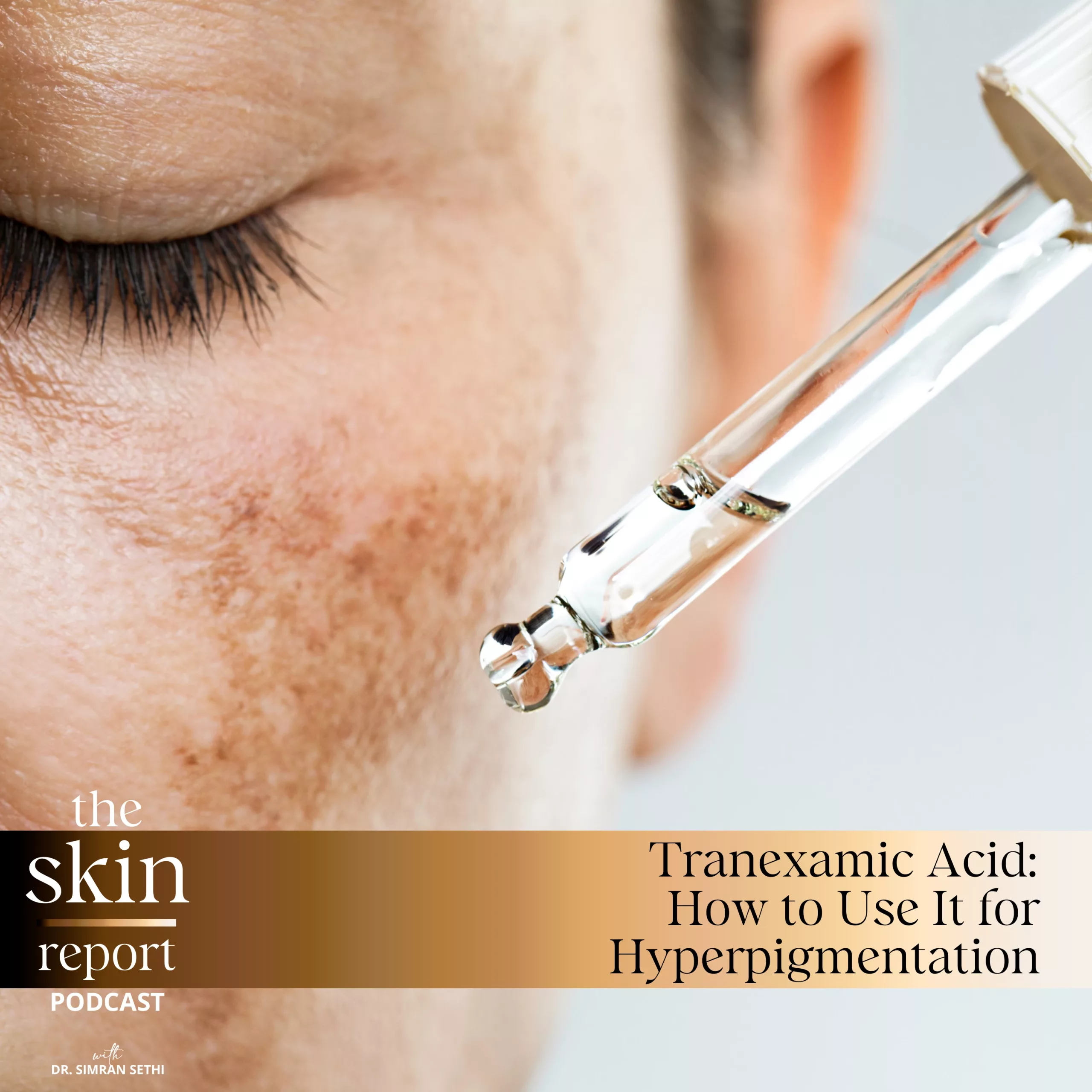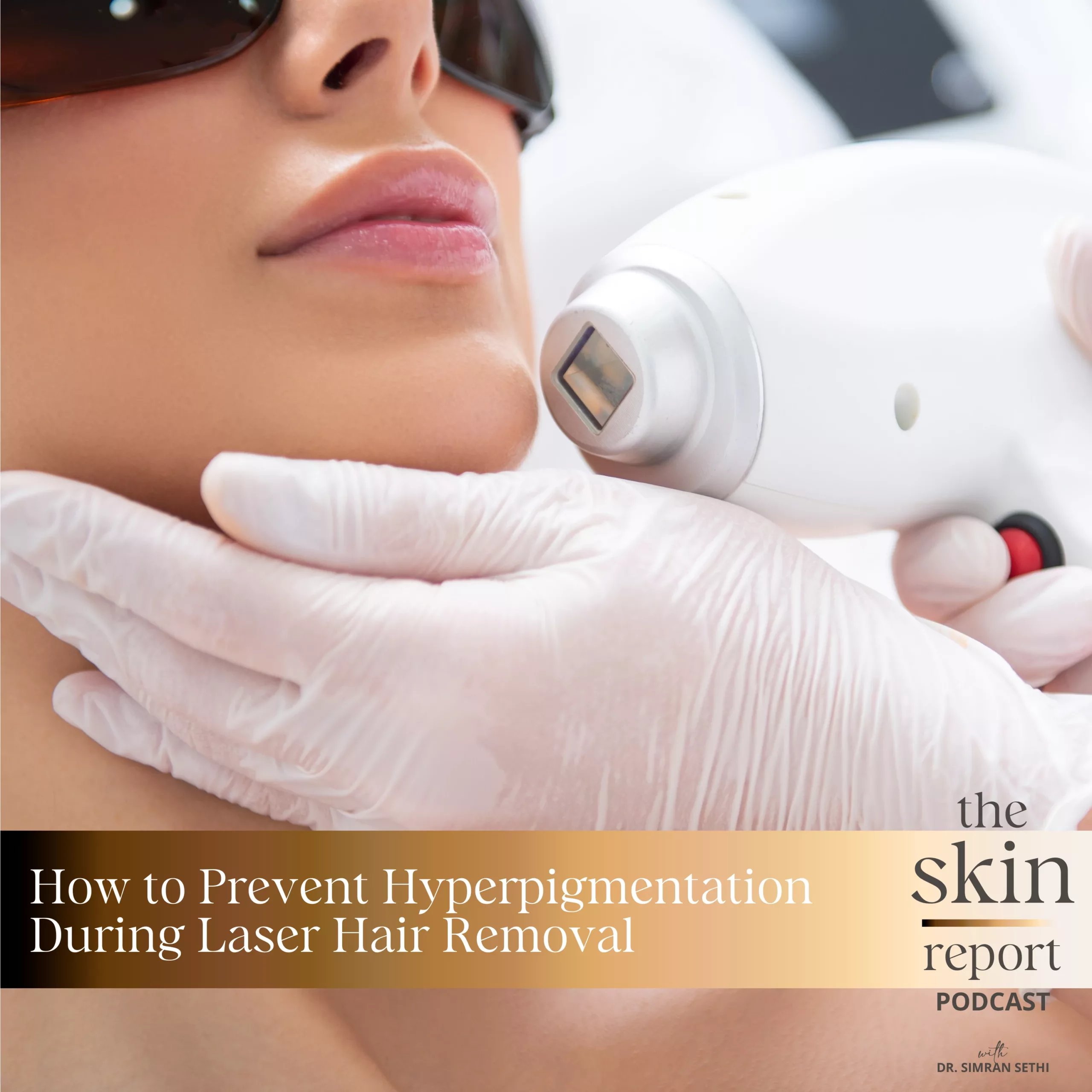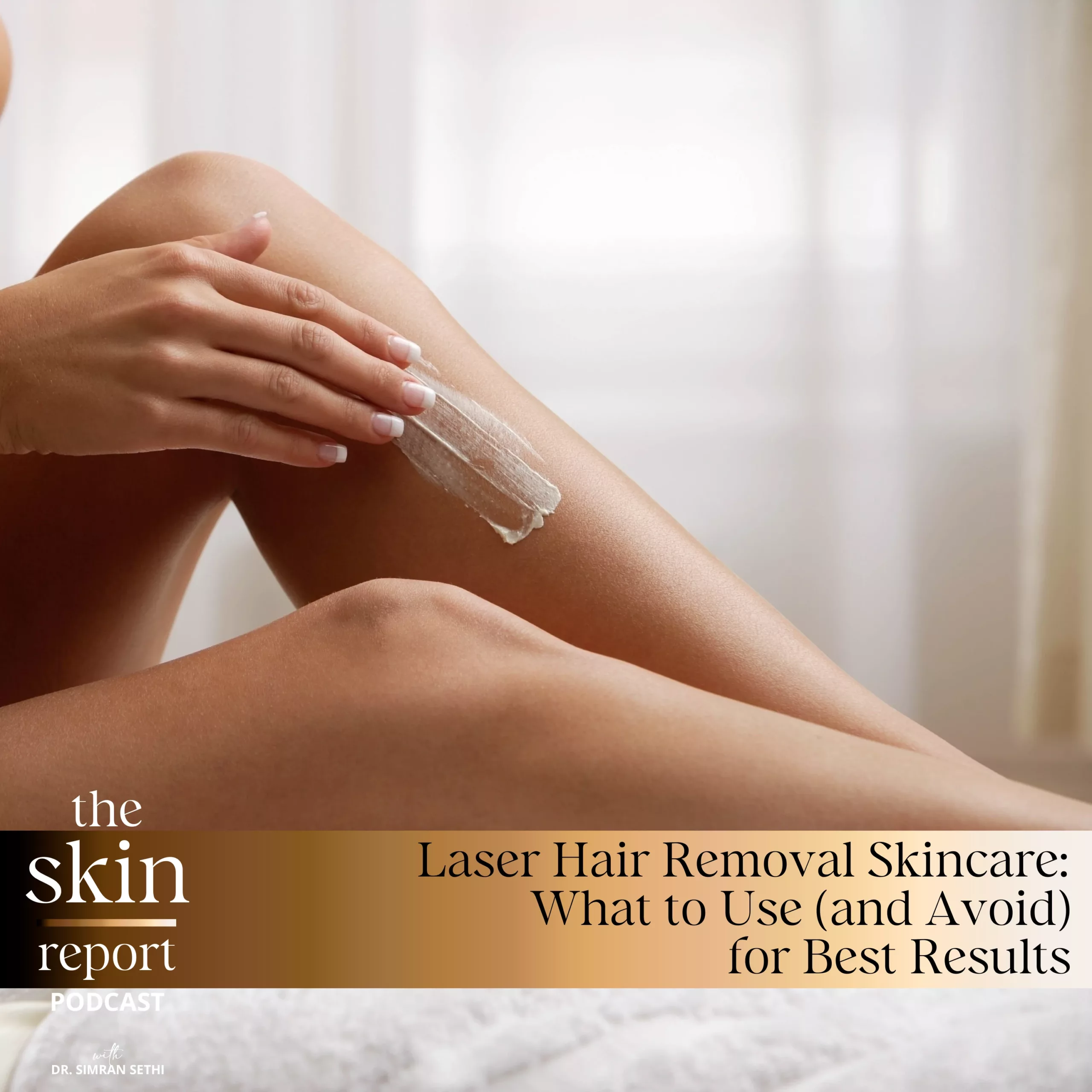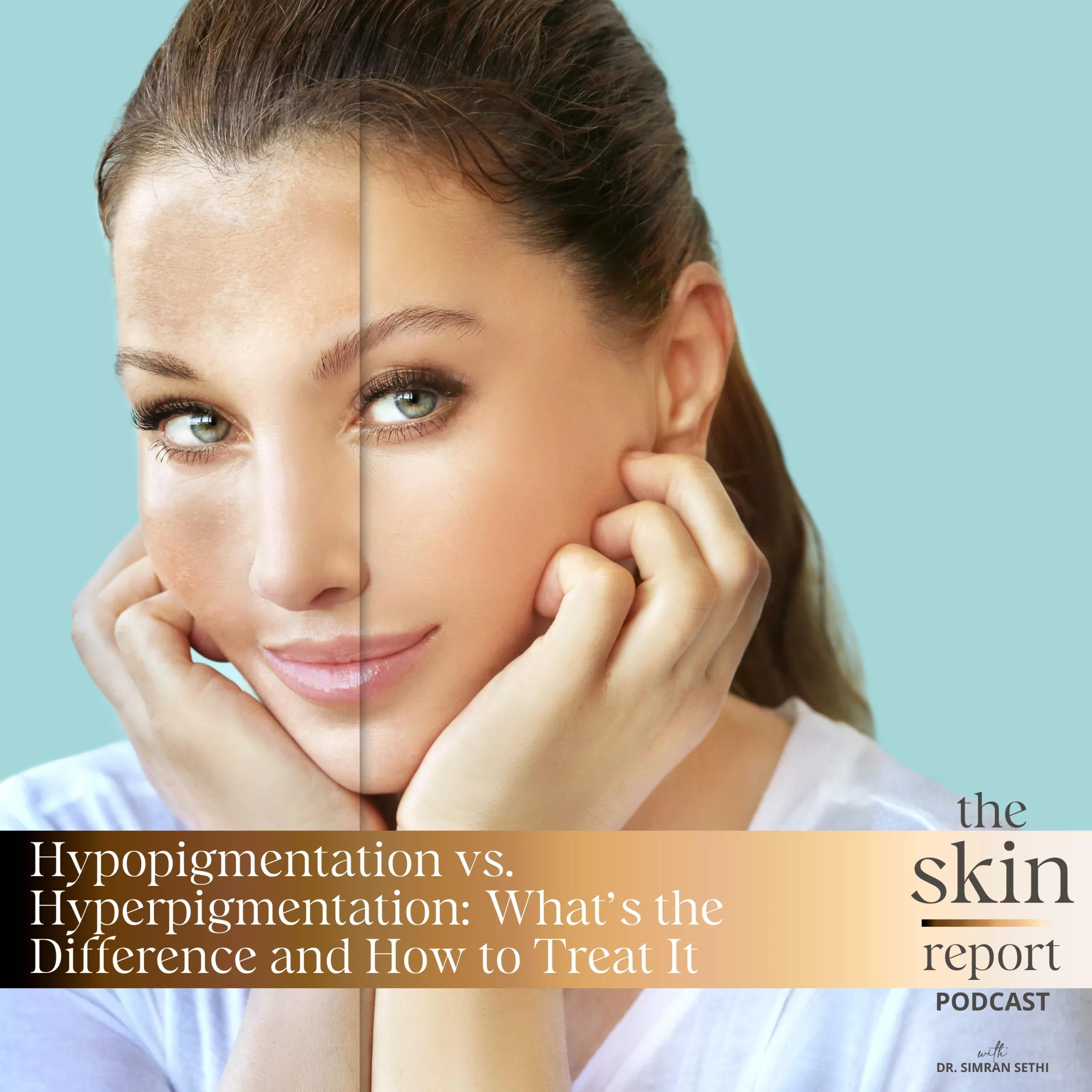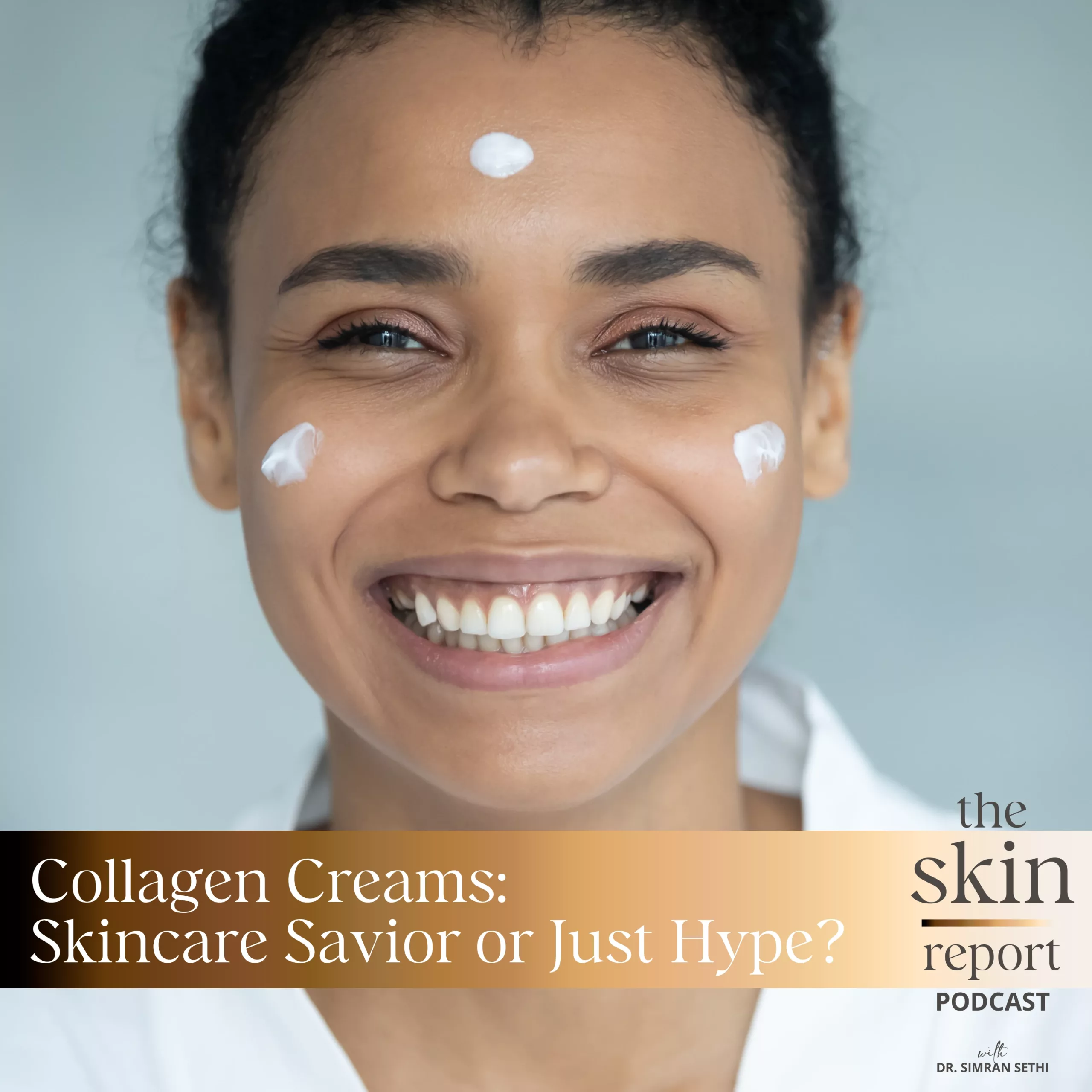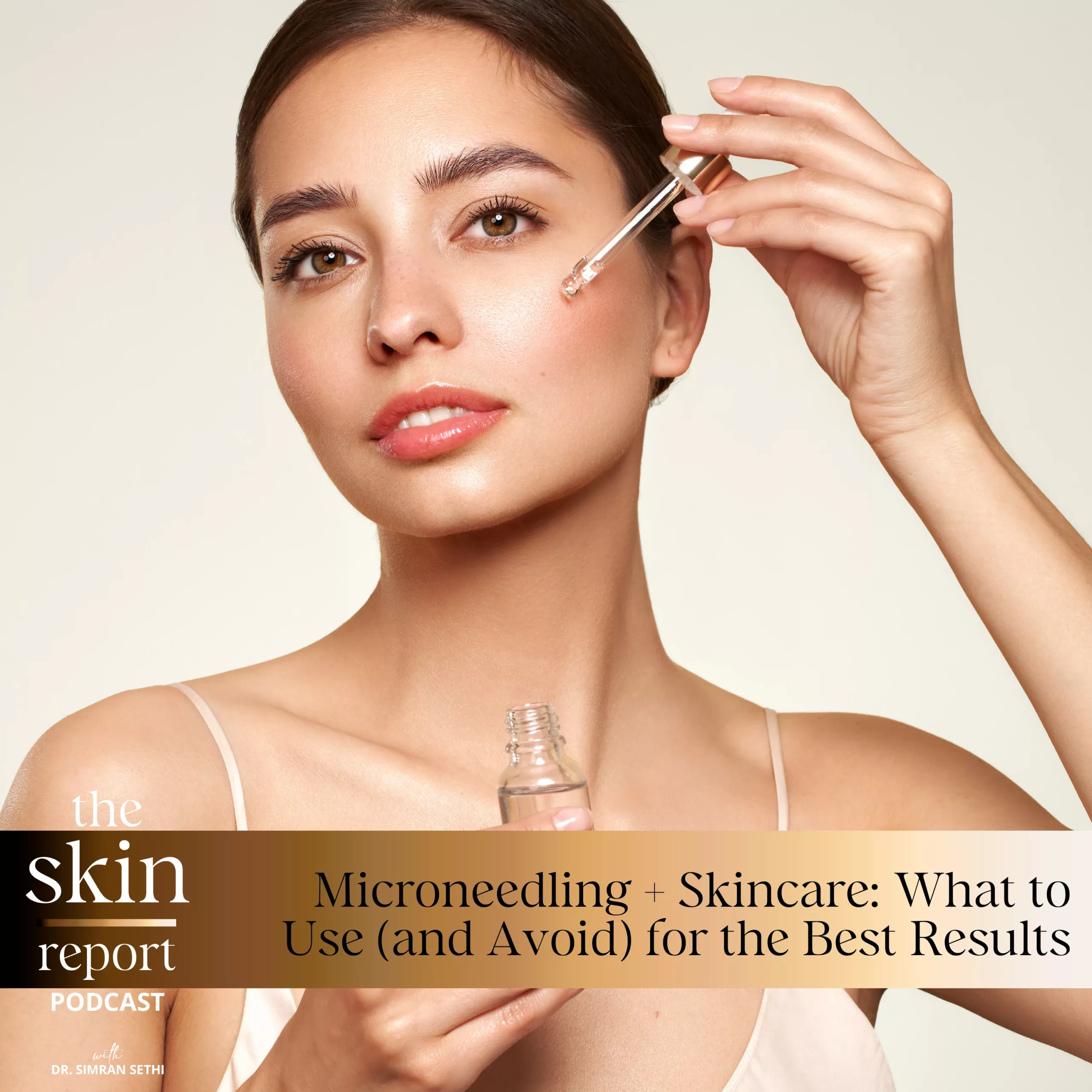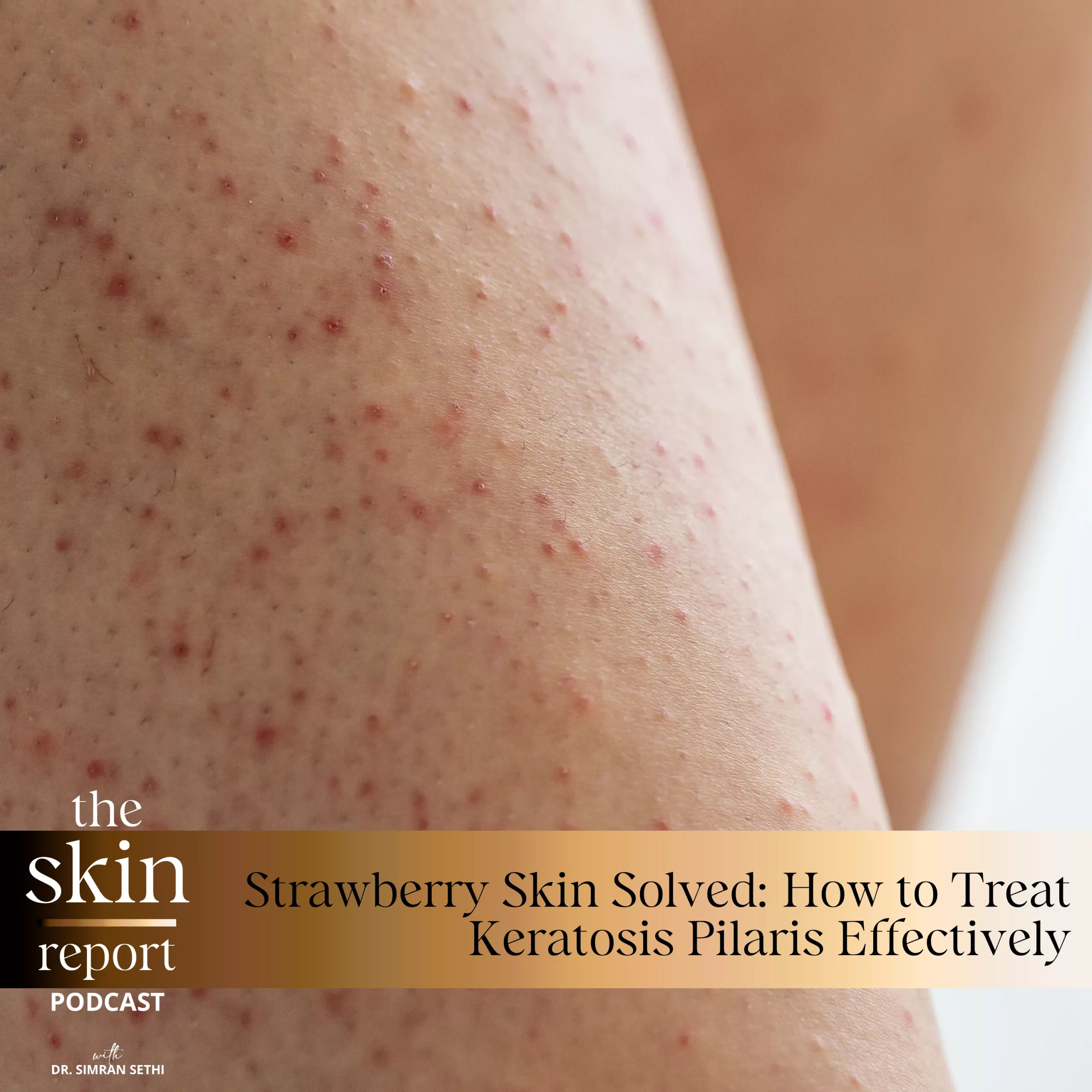When we think of hair loss, we often think of male pattern baldness. However, women can experience hair loss as well. While hair loss between men and women may look the same, it can have different causes. For example, women may experience hair thinning due to menopause, female pattern baldness, pregnancy hair loss, PCOS hair loss, or hair growth complications brought on by other factors. So how can women treat their hair loss and nurture their hair health?
The Skin Report is a podcast created to educate listeners on methods to improve skin health for people of all ethnicities and ages. On this episode, host Dr. Sethi talks about female hair loss and the factors that may contribute to it. Hormonal changes, genetics, or other health and lifestyle factors can bring on hair loss in women. Dr. Sethi explains some of the common causes of female hair loss and ways women can treat and nurture their hair growth!
Follow and DM a question for Dr. Sethi to answer on The Skin Report Podcast:
RenewMD Beauty Instagram: https://www.instagram.com/renewmd_beauty/
RenewMD Beauty Medical Spas, California: https://renewmdwellness.com/
https://www.healthline.com/health/rosemary-oil-for-hair#research
https://www.hsph.harvard.edu/nutritionsource/healthy-weight/diet-reviews/mediterranean-diet/
https://www.ncbi.nlm.nih.gov/pmc/articles/PMC1261195/
https://publicdocuments.sth.nhs.uk/pil1150.pdf
https://www.statista.com/statistics/678437/changes-women-wish-they-could-make-to-their-hair-us/
https://thehairsociety.org/hair-loss-statistics-the-facts/
https://scandinavianbiolabs.com/blogs/journal/hair-loss-statistics
This transcript was exported on December 13, 2022 -view latest version here.
Skincare can sometimes feel overwhelming. Whether it’s finding the right products, ingredients, or treatments. There’s a lot out there, but not always for people of African, Hispanic, Middle Eastern and East and South Asian descent. That’s why I set out to educate myself and others so that we can all feel beautiful in our skin. Hello and welcome to The Skin Report. I’m Dr. Simran Sethi, an internal medicine doctor, mom of three and CEO and founder of RenewMD, Medical Spas and Skin by Dr. Sethi.
It is now December, which means it’s that time of year. Whether you’re celebrating Hanukkah, Christmas, or Kwanza, you’re doing some holiday shopping. If you’d like to hear my advice on which skincare gifts are worth the money, tune into episode 29 of The Skin Report. If you’re interested in learning more about male hair loss and if plasma rich platelet therapy can help, check out last week’s episode. For today, we’ll be continuing our discussion on hair loss and PRP, this time with a focus on female hair loss, so let’s jump in. As we discussed last week, human hair is pretty incredible from a biological and social standpoint. It’s our fastest growing tissue with an average growth of 35 meters per day and is often a symbol of identity, culture, and beauty. When we think of thinning or balding hair, we tend to think of men first. But for a variety of reasons, women experience it too. In fact, 50% of women experience hair loss at some point in their lifetime.
Thinning or balding hair can feel devastating, especially with the social and beauty standards placed on it today, In a report published by Statistica, 43% of surveyed women wish their hair was thicker and fuller. Women tend to experience more psychological effects due to hair loss. For example, a study of 96 women surveyed for female pattern hair loss versus women with normal hair growth showed significant negative psychosocial consequences. 70% of surveyed women reported feelings of negative body image, poorer self-esteem, less of a sense of control over their lives, and had a less satisfying quality of life. Women also lose hair in a different pattern than men do. While men typically experience a receding hairline first, women see hair loss starting with their middle or side parting in the frontal part of the head. The second most common area for women is the crown of the head. There are many medical conditions that cause temporary or permanent, moderate to severe hair loss. But for today I want to talk about the most common causes of hair loss for women. Stick around to hear what those are.
The first cause I want to tackle is androgen mediated hair loss as it has separate causes to it than perimenopausal and postpartum hair loss in women. Androgen mediated hair loss in women is frequently seen in disorders like polycystic ovarian syndrome, in which women tend to have higher than normal testosterone levels. Just like in men, this elevated testosterone leads to the hair loss. However, in women, this process is not as clearly understood, as studies measuring testosterone levels in women with hair loss have shown inconclusive results. All we know as of right now is that disorders which lean towards greater testosterone levels in women result in hair loss. Another factor that can be overlooked is genetics. Genetics do play a role in women’s hair loss, though not at the same rate as it does for men. Again, how this is caused in women is still less known than in men with genetic tendencies towards hair loss.
Now I want to take a moment to discuss a cause of hair loss specific to women: Postpartum and perimenopausal. Let’s start with postpartum. There is an increase in hair thickness and growth while women are pregnant as they are in a very estrogenic state. However, after birth, women tend to experience three to six months of shed. Usually women return to their baseline hair thickness, but in some cases the hair can be thinner than pre-pregnancy. If you are experiencing postpartum hair loss, you can take advantage of PRP hair restoration as an effective solution. If you’re interested in learning more about how pregnancy impacts you, check out our pregnancy skin episode of The Skin Report. Next, women can also experience hair thinning when in a perimenopausal state. The perimenopausal state refers to the years leading up to menopause to a few years after menopause. In the years leading up to menopause, women face a small decline in estrogen and progesterone levels. In menopause, estrogen and progesterone levels decline even more. Annual response to this androgen or testosterone levels increase. Again, just like other androgenic conditions in women, excess androgen levels lead to hair loss on the scalp.
This is a common occurrence as about 50% of women start losing hair by 50 years old according to one study. Another study published by the Journal of the North American Menopause Society found that 50% of women experience hair loss post-menopause. Interestingly and unfortunately, the increase in androgen levels lead to more facial growth, especially on the upper lip and chin. I see this commonly in my office and perform laser hair removal on this group of women, which is very effective. Going back to perimenopausal hair loss, this type of hair loss is more gradual, but typically occurs in the same areas of the head mentioned earlier: The crown of the head or middle and side part.
Another reason may be due to hypothyroidism. Just as with men, this type of hair loss is accompanied with unexplained weight gain and cold intolerance. If there are other symptoms present, I will evaluate this before starting any treatments. When we return, we’ll cover lifestyle factors that may be impacting the health of your hair. While genetics, medical conditions and hormones play a large role in the thickness of our hair, our lifestyles can also have an influence. Male pattern baldness accounts for about 90% of all hair loss in men. However, about 30% of women are impacted by female patterned hair loss by age 70, according to a study published in the NHS Foundation trust.
We know menopause is a big reason behind thinning and balding hair, but what else can cause it? Stress can lead to hair loss in women maybe even so more than in men. Disruptions in sleep lead to increased cortisol levels, which directly causes hair loss. Cortisol hormone levels increase in both acute and chronic stress. Cortisol disrupts normal androgen levels, which as we know lead to hair loss. In fact, the National Library of Medicine published a piece that found that women who experience high stress are 11 times more likely to lose their hair. Just like in men, a significant decrease in caloric intake, which is less than a thousand calories a day, will lead to hair loss. When trying to lose weight, some people may go on too restrictive of a diet, which then impacts their hair growth. Just like in men, correction of the diet will promote hair growth.
I would like to mention here that we need a healthy amount and balance of carbohydrates, fats, proteins, minerals, and vitamins. In nurturing our bodies, we reduce cortisol levels. This tells our body that we are not in stress mode to support optimal hair and skin growth. Women often ask me if staying on a restrictive diet but adding vitamins helps with their hair loss. The truth is that it won’t. When our body senses a severely decreased caloric intake, it conserves energy by redirecting all its energy to important functions like keeping vital organs functioning. Hair, nails and skin growth are not really considered vital organs, so these will suffer in the face of low nutrition levels.
While I understand people want to lose weight for different reasons, I can say as a physician that a balanced active lifestyle goes a long way. You may be surprised by how much of an impact getting 30 minutes of exercise and veggie and fruit intake each day can have. However, if you’re looking for something more intensive, I always like to suggest the Mediterranean diet. Numerous studies over the years point to the Mediterranean diet as one of the best diets for your physical and mental health, reducing the risk of heart failure by focusing on fruits, vegetables, whole grains, legumes, beans, nuts, and fish. The Mediterranean diet can help you in your weight loss journey without compromising your health. Another cause of hair loss may be iron deficiency anemia. If women experience heavy bleeding, they may develop iron deficiency anemia, which leads to hair thinning. When I’m assessing menstruating women, I always ask about this. Taking iron supplements for anemia will not only help your overall health, but can help your hair too.
Women can also experience traction alopecia, which is a type of hair loss that happens due to hairstyle that lead to excess pulling of hair. For example, hairstyles that include extensions or tight buns pull hair out of their follicles with excess force. If you’ve noticed your hair thinning due to certain styles, I would highly suggest finding an alternative, letting your hair down, putting it in a loose braid or opting for hair styling tools that are kinder to your hair. Scrunchies instead of hair elastics, gentle combs for wet hair, bonnets at night. If this pulling occurs for a long time, it results in hair loss that can be permanent if not treated. In our hair loss episode from last week, we discussed how PRP can be effective for some and not others. Stick around to here more on if PRP is an option for you.
When it comes to plasma rich platelet therapy or PRP therapy, women actually seem to be more responsive to treatments. They also tend to seek out solutions earlier than men, perhaps in part from pressure of beauty standards and the psychological ramifications. The good news is that PRP is a great option and effective in all types of hair loss I mentioned today. The key here is to start early and stay consistent. If women start PRP treatments when they’re hair is thinning and you can still see follicles on their scalp versus a shiny scalp, they will respond to RRP treatments. They will also need to start with at least four to six sessions spaced one month apart. I recommend then doing another session three months after the last one in the series, followed by every six months if their hair loss is androgenetic or perimenopausal.
If hair loss is caused by thyroid disorders, diet, traction alopecia, stress, and post-pregnancy, hair growth improves its removal of the cause or end of pregnancy. You will see most likely a return to your baseline thickness though not always. If after six months you have not noticed baseline hair growth despite resolving the cause, PRP hair restoration is an excellent option. Now let’s discuss a popular TikTok that promotes scalp massage and rosemary oil for hair growth. This TikTok shows how to massage a scalp and apply rosemary oil for hair health and thickness.
Hair oiling is a centuries old practice, and there are so many claims out there about which oils are best. Oils like coconut, castor, almond, and rosemary oil have been touted for their hair growth benefits. But the reality is that there is very little scientific evidence to support these claims. The practice ofhair oiling deserves an episode of its own because it does have benefits depending on the oil. But some benefits that are marketed on the internet are simply untrue. So back to this TikTok. I would not jump to using rosemary oil on my scalp to promote hair growth because it is not backed by any scientific research. It may be a way to smoothen hair, but in a future episode, we can break down the benefits further and which various oils are right for you. If you have a specific skin or hair care question, you can message me at theskinreportbydrsethi.com. On this site, you can even leave a voice message, which we will then play in our episode.
If you’d like to learn more about science backed skincare or medical aesthetic treatments, please subscribe to and turn on notifications for The Skin Report so you always know when a new episode is up. We have a newsletter that you can sign up for on theskinreportbydrsethi.com so that you can stay up to date on all our new episodes, blogs, products, and more. Additionally, if you have a skincare question or want to make an episode topic recommendation, please message me at theskinreportbydrsethi.com. We’ve received some great questions so far and I’ll try and answer them at the end of every episode, so keep them coming. Thanks for listening, and until next time, love the skin you’re in and celebrate your beauty.
Transcript by Rev.com


